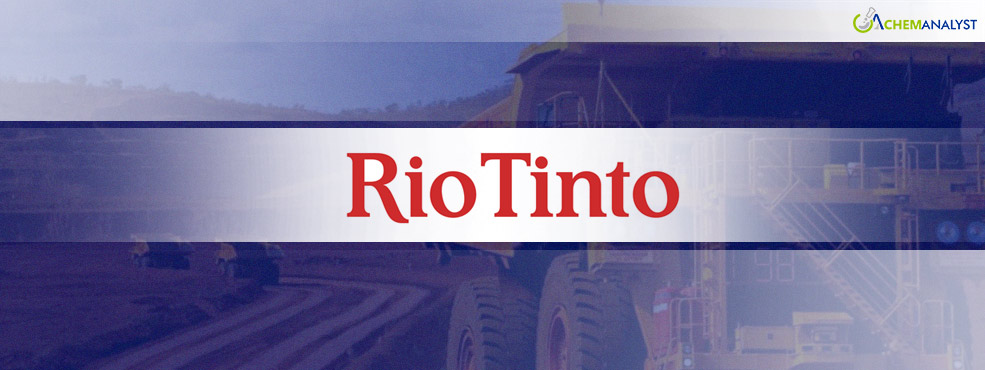Rio Tinto reports Increase in Q3 Iron Ore shipments, expects first Simandou output by 2025
- 16-Oct-2024 9:30 PM
- Journalist: Xiang Hong
Rio Tinto recorded a slight increase in iron ore shipments during the third quarter, a result that largely met market expectations. The company attributed this uptick to ongoing operational efficiencies and strong demand for iron ore, which continues to be a crucial commodity in global markets.
In addition to the quarterly results, Rio Tinto announced that it is on track for the first production from its Simandou high-grade iron ore project in Guinea, with output expected to commence next year. This project is significant for the company, as it aims to enhance its portfolio and bolster its position in the iron ore market. The Simandou project is one of the largest untapped iron ore reserves globally, and its development is anticipated to play a key role in meeting the increasing demand for high-quality iron ore, particularly from markets in Asia.
Overall, Rio Tinto's performance in Q3 and its progress on the Simandou project reflect the company’s strategic focus on growth and sustainability in its operations, positioning itself well for future developments in the iron ore sector.
The Simfer mine, part of the Simandou project, is expected to gradually increase its production over a span of 30 months, ultimately achieving an annual capacity of 60 million tonnes (Mt) following its initial output. This announcement was made by Rio Tinto, the world's largest iron ore producer, highlighting the company’s commitment to expanding its operations and meeting the growing demand for high-grade iron ore in the global market. The ramp-up process is a critical phase for the project, which aims to position Rio Tinto as a key player in the iron ore industry, particularly as it seeks to capitalize on the opportunities presented by emerging markets.
Rio Tinto is poised to initiate its first lithium production from the Rincon project in Argentina by the end of this year. This strategic move is part of the company's broader efforts to strengthen its presence in the lithium market, particularly as demand for battery metals continues to rise. In a notable development, Rio Tinto has also announced its agreement to acquire Arcadium Lithium for $6.7 billion. This acquisition is set to position the company as the third-largest miner of lithium globally, reflecting its commitment to expanding its portfolio in this critical sector.
In terms of iron ore operations, Rio Tinto reported shipments totaling 84.5 million tonnes (Mt) from its Pilbara region during the third quarter, benefiting from various operational enhancements. This figure aligns closely with the Visible Alpha consensus estimate of 84.74 Mt and marks an increase compared to the 83.9 Mt shipped in the same quarter the previous year.
Despite these positive shipping figures, iron ore prices remained under significant pressure for much of the third quarter, driven largely by concerns about demand in China’s steel market. Persistently weak property prices in the country have contributed to a dim outlook for steel consumption, which is a key driver of iron ore demand. However, there is cautious optimism surrounding potential measures recently implemented by the Chinese government aimed at revitalizing the struggling property sector, which could help improve demand dynamics.
In the Pilbara region, Rio Tinto's iron ore production saw a slight increase, reaching 84.1 Mt for the three months ending in September, up from 83.5 Mt during the same period the previous year. In contrast, the company experienced an 11% decrease in production from its Iron Ore Company of Canada (IOC) operations. This decline was attributed to a series of site-wide shutdowns caused by forest fires in mid-July. Consequently, Rio Tinto has revised its production forecast for iron ore pellets and concentrate from the IOC, now estimating output between 9.1 to 9.6 Mt for 2024.
Additionally, the company reported a marginal decline in mined copper production. While increased output from the Escondida and Oyu Tolgoi mines contributed positively, this was offset by a significant 44% drop in production at the Kennecott mine due to operational difficulties. These mixed results underscore the challenges Rio Tinto faces as it navigates fluctuating market conditions and operational hurdles across its diverse portfolio of mining assets.
Overall, Rio Tinto's performance in the third quarter reflects both its resilience in iron ore operations and its strategic pivot toward lithium and other battery metals, positioning the company to capitalize on future market trends while addressing current challenges in its production landscape.



